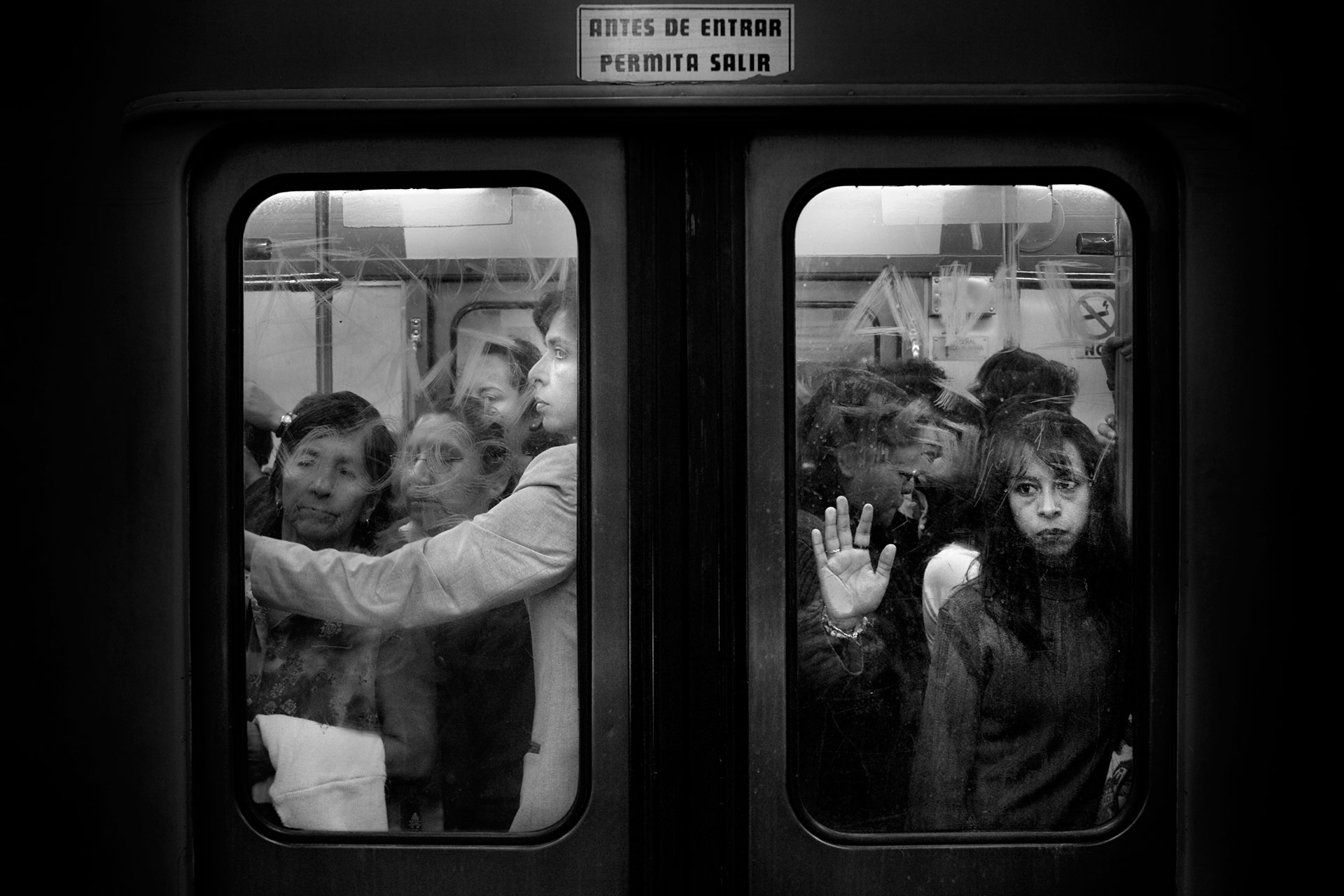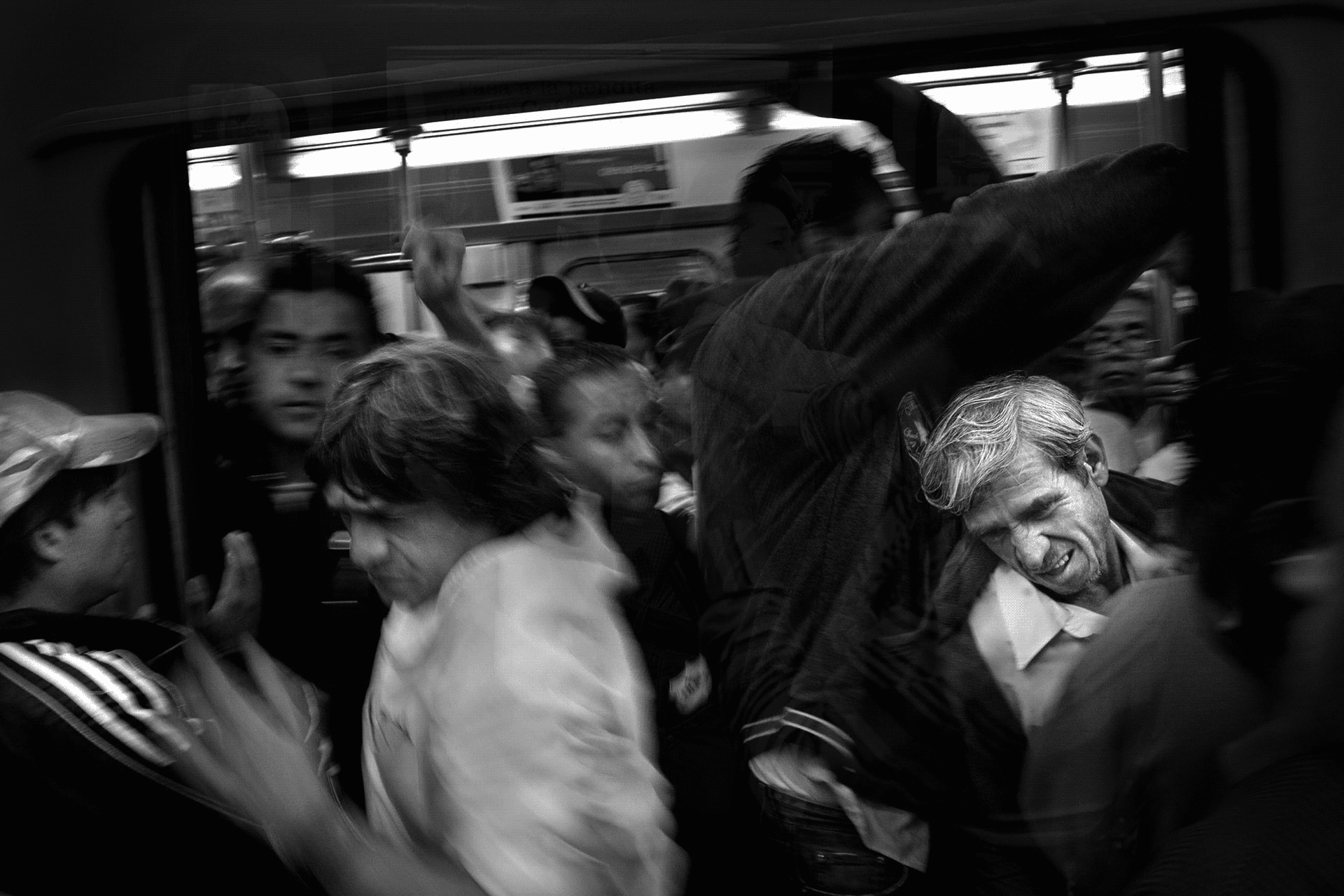-
Mexico City Buzz Blues
Text by Mario Ballesteros
Photography Héctor Mediavilla
»Love’s multitudinous boneyard of decay«
Jack Kerouac, “230th Chorus”, Mexico City Blues
-
In late April 2009, after dozens of deaths from an unidentified virus outbreak, Mexico City was forced to shut itself down. Schools, public buildings and transport, offices, restaurants, and just about any space where people usually gather, were closed off for days. The H1N1 influenza scare managed to do what neither that year’s global economic crisis nor the drug war plaguing other parts of the country had been able to: bring the city to a halt. It wasn’t the first time we’d played out near doomsday scenarios – major earthquakes, ash clouds from neighbouring volcanoes, life-threatening smog contingencies, we’ve had them all, but never had Mexico City seemed so frightening as in those eerily empty days of stillness.
The lure of Mexico City has always been its overflow, its instability, its wild, ancient heart beating relentlessly under layers of mud and bone and concrete and steel, alongside stories of violence, seduction, struggle and joy.
That’s how we like it here.
Shortly after the outbreak, we already had cumbias dedicated to the influenza popping up on YouTube and people were taking back the streets wearing customised protective face masks, and soon enough everyone was hugging and kissing cheeks again and effusively shaking previously-disinfected hands. In a matter of days, Mexico City was back on its feet, and life was as loud and busy and bustling as usual. -

All photos © Héctor Mediavilla, from the series “Megalopolis Underground”, which documents Mexico City's underground metro system.
»...its wild, ancient heart beating relentlessly under layers of mud and bone and concrete and steel...«
-
That pretty much sums up the essence of this beast of a city: a happy, raucous, day-to-day normal skimming on the surface of tragedy. And it’s probably why you won’t see us on any “most livable city” list. We’re not the prettiest, and we’re definitely not the easiest, nor the most civilised. We’re not for everyone. Mexico City is tough, but once you give yourself over to her, once she eats you up like a postmodern sacrificial virgin, her insides are warm and deep and alive more than any city you know. There’s this Mexico City high.
»...a happy, raucous, day-to-day normal skimming on the surface of tragedy.«
Part of it might be the fact we’re standing on an ancient lake bed, sinking and shaking nonstop. Part of it might be the fumes from the three million cars that clog the city’s arteries, or the permanent sensory overload, the noise and visual frenzy of an oversaturated cityscape.
But part of it is pure juice, thick and intoxicating goo covering your skin the moment you step out onto the street, swaying you constantly between the most vital buzz and the most melancholy blues. -

-
Mario Ballasteros is an independent editor and critic. After six years in Barcelona, he returned to Mexico City in 2012 to launch and direct the Mexican edition of Domus magazine. He currently works for the Laboratorio para la Ciudad, an experimental think tank inside the Mexico City government.
@marioballe
Héctor Mediavilla is a Spanish documentary photographer working primarily in Africa and Latin America since 2001. His work focuses on social injustices and understanding the human condition. His images have been published in international publications and exhibited at the Musée Dapper in Paris, the Museum der Weltkulturen in Frankfurt, Galleria Ollerios, Sao Paulo and the Centre Culturel Français of Kinshasa.
In his series, Megalopolis Underground, Héctor Mediavilla documents the underground metro systems of Mexico City and Sao Paulo, the largest cities in Latin America. Transporting more than 4 million passengers per day, Mediavilla portrays the erosion of personal space and identity when travelling as an amorphous mass of people, especially during rush hours.
The blues covers the closed parts of the city, divided by fences and overpasses and electric gates, and guarded residential towers. It lingers in the forgotten structures of the past, as time chips away at them bit by bit. It oozes from the manicured lawns of the architectures of status and power and the rough makeshift edges of the architectures of survival. It rubs off on both rich and poor on their weary rides home stuck in traffic in rundown peseros or imported sedans with fresh wax jobs. It emanates from deep desecrations and dead idols and the bad karma piling up in the city for centuries: conquest, invasions, power struggles, student massacres, gratuitous violence.
The buzz spurts from the open city: the squares and plazas and parks, the pilgrimages and political concentrations and festive massive congregations. It hangs from the improvised stalls that bleed out onto the streets with their pink and red tarps that can be spotted from an airplane in the sea of grey. You taste it in our rich, dizzying food and in our far out musical mashups and our daytime melodramas. It feeds a unique breed of architecture, dressed with the theatrics of identity and wannabe modernity, struggling between heavy institutional mass and fearless experimentation and independent spirit.
This bluesy buzzy goo is what makes Mexico City lush. It’s not an easy breezy leafy lush, but a twisted, multitudinous, superimposed lushness of meat and stone and plastic and organic matter. The lushness of life and death and growth from decay. Mexico City doesn’t stand for the civilised triumph over nature, but as testament to our flawed and tremendously human understanding and celebration and fear of it.
The best of cities and the worst of cities.
And we are mad about her. I
-
Search
-
FIND PRODUCTS
PRODUCT GROUP
- Building Materials
- Building Panels
- Building technology
- Façade
- Fittings
- Heating, Cooling, Ventilation
- Interior
- Roof
- Sanitary facilities
MANUFACTURER
- 3A Composites
- Alape
- Armstrong
- Caparol
- Eternit
- FSB
- Gira
- Hagemeister
- JUNG
- Kaldewei
- Lamberts
- Leicht
- Solarlux
- Steininger Designers
- Stiebel Eltron
- Velux
- Warema
- Wilkhahn
-
Follow Us
Tumblr
New and existing Tumblr users can connect with uncube and share our visual diary.
»I don’t mistrust reality of which I hardly know anything. I just mistrust the picture of it that our senses deliver.«
Gerhard Richter
Keyboard Shortcuts
- Supermenu
- Skip Articles
- Turn Pages
- Contents


